Travel Tales from The Hub
Yosemite National Park
More Photo Tips | Video Gallery | Photo Gallery | Enewsletter sign-up

By Ken Hubbard
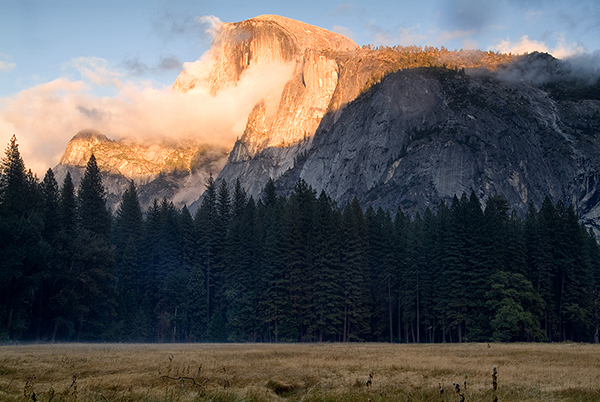
Half Dome 2006: Tamron 17-50mm Di II: 1/6 Sec., f/11, ISO 200 @ 31mm
Click image to view larger
I still remember the first time I visited Yosemite National Park, I was flying into SFO and had 36 hours of free time before I needed to be in Palo Alto for an event. My time was limited, but I was going to make the most of it. I picked up my rental car and raced eastward over the San Mateo Bridge leaving the congestion of the bay area for the towering granite mountains of Sierra Nevada range. Making it to the valley in about 3 ½ hours (doing 55mph all the way of course) I was there well before the magic of golden hour and the sun setting on Half Dome. With my mouth wide open in awe of this majestic park, I spent the next 32 ½ hours sight-seeing and photographing everything I could. Fast forward to 2018, returning for my 7th trip to Yosemite, I still drive around this beautiful park with my mouth wide open in awe, trying to capture its splendor in single frames.
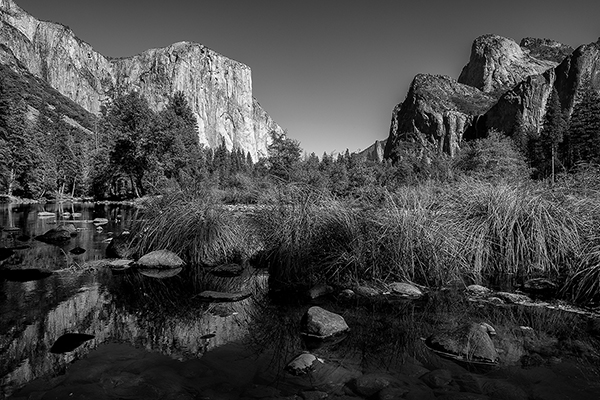
Valley View Pull Out: Tamron 17-35mm Di: 1/20 Sec., f/18, ISO 64 @ 22mm
Click image to view larger
Yosemite National Park covers about 1,169 square miles, making it just about the same size as the state of Rhode Island. Yosemite's unique valley formation started approximately 10 million years ago when what is now the Sierra Nevada Range started its upward movement. With a steep eastern side and a gentle western tilt, rivers started to carve the canyon. At about 3 million years the range continued to rise and “Merced River” cut deeper into the canyon to about 3,000 ft. in some places. At about 1 million years glaciers started to form and make their way down the westward slope filling and carving the valley into the shapes that you see today. These glaciers were upwards of 4,000 ft. thick in some parts of the valley. Finally, about 10,000 years ago the last of the glaciers melted away leaving behind a lake that would eventually drain and become the valley floor.
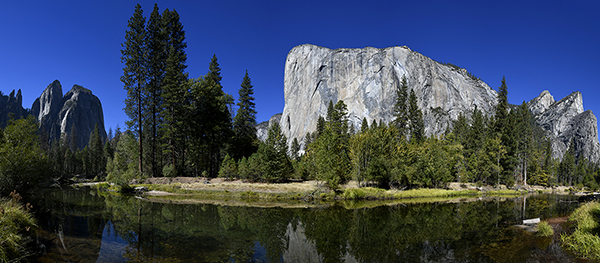
5 Image Pano of El Capitan: Tamron 17-35mm Di: 1/30 Sec., f/16, ISO 64 @ 24mm
Click image to view larger
Yosemite may not be the largest national park or the most visited, it did come in at number 5 with more than 4.3 million visitors in 2017, but it does have some of the most iconic and recognizable geological formations of any national park. Visitors to the park immediately recognize the grand vistas of Glacier Point and Tunnel View, the sheer vertical face of Half Dome and massive size of El Capitan, as well as the beauty of Yosemite Falls. These valley locations are all very easy to view and photograph, with many of them accessible by pull outs along the roadway and short walks on easy trails. For those of you that are a bit more adventurous, there are plenty of trails that are heart stopping and white-knuckle clenching. If you have no fear of heights and all day to hike, you can attempt the hike up to the top of Half Dome. Just beware that this is an incredibly strenuous hike that will have you climbing the back side of the peak via steps carved into the granite wall and gripping tightly onto cables to balance yourself.
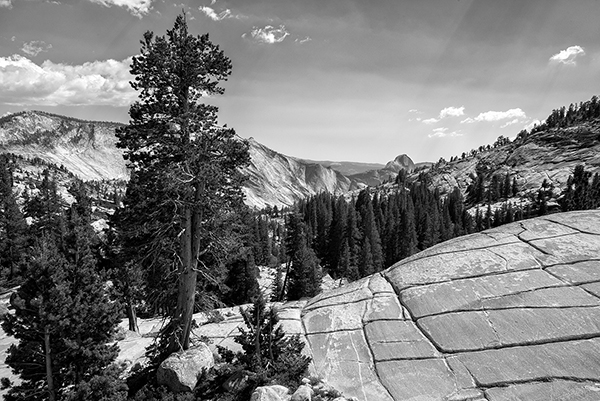
Tioga Pass Rd: Tamron SP24-70mm Di: 1/60 Sec., f/16, ISO 100 @ 26mm
Click image to view larger
Even though most visitors spend the majority of their time in the valley there is so much more within this park to visit, some of which may be a bit of a distance, but well worth the drive. In the southern most portion of the park you can visit a grove of more than 500 giant sequoia trees known as the Mariposa Grove, some of which are upwards of 1800 years old. Another great day drive from late spring to early fall is along Tioga Road (usually closes from early Nov. to early May), this roadway will take you north of the valley starting near Crane Flat on the west side of the park all the way to Mono Basin on the East side. Along the way you will drive by such beautiful locations as Porcupine Flat, Olmstead Point and Tuolumme Meadows.
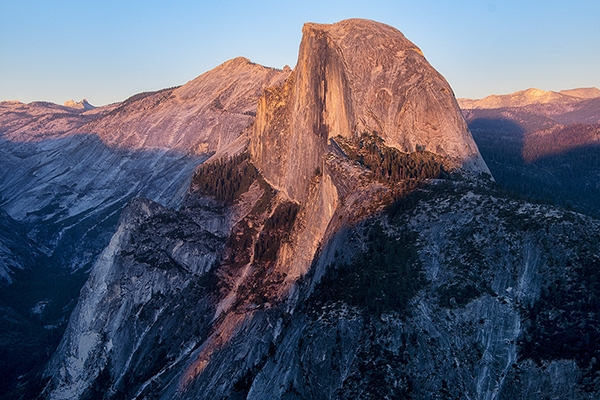
Half Dome: Tamron 18-400mm Di II: 1/40 Sec., f/8, ISO 100 @ 44mm
Click image to view larger
Yosemite is a photographers paradise made famous by Ansel Adams amazing Black and White images of the park. Some of the most popular places to capture the true beauty of the park are: Glacier Point for sunset, the sun will slowly light up the face and side of Half Dome and other peaks with golden and pink colors. Just get there early and stake your claim to a spot, people will soon fill in all remaining spaces as the sun goes down.
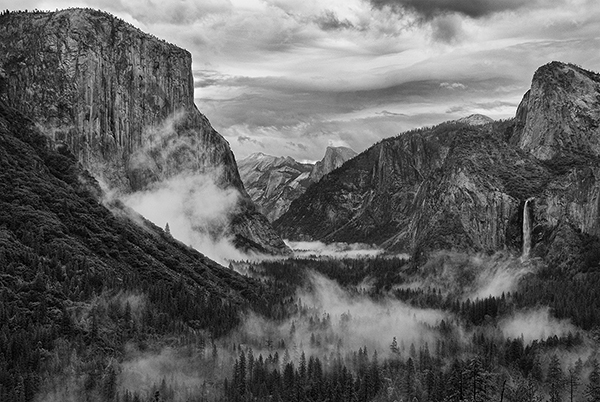
Tunnel View 2008: Tamron 18-270mm Di II: 1/3 Sec., f/16, ISO 200 @ 32mm
Click image to view larger
Tunnel View, sunset seems to be the most popular time and can be spectacular with the light hitting Half Dome, but I prefer any-time of day that is stormy, with good definition in the clouds and low-lying mist snaking its way through the valley trees, your images will be spectacular.
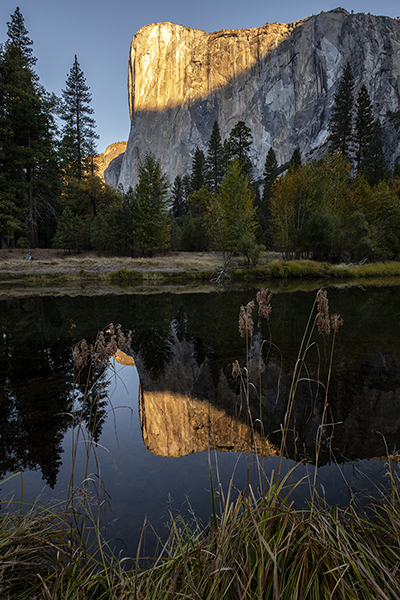
El Capitan: Tamron 17-35mm Di: 1/30 Sec., f/16, ISO 400 @ 17mm
Click image to view larger
Along the Merced River facing El Capitan: This is a beautiful sunrise location and you don’t have to get there in the dark. Since the sun will take an hour or so to make its way over the mountains (behind you) to light up El Capitan, you have time to find a good pullout along Southside Drive and walk down to the river and get reflections of the peak and trees as the rising sun hits the rim.
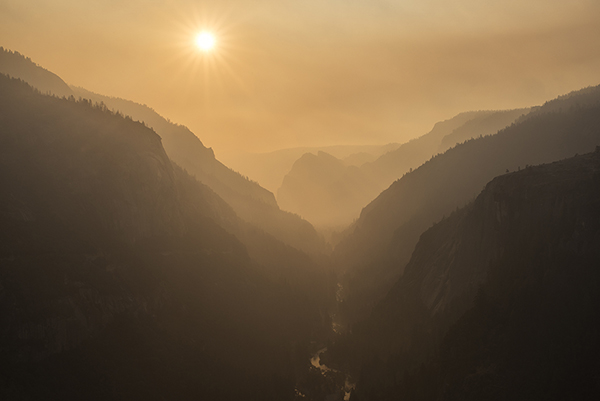
Smoky Morning: Tamron SP24-70mm Di VC G2 Di: 1/60 Sec., f/22, ISO 100 @ 36mm
Click image to view larger
Tamron lenses used in this article
SP 24-70mm Di VC USD G2
17-35mm Di
18-400mm Di VC PZD
SP 17-50mm Di II
More Photo Tips | Watch Videos | Learn More About Tamron Lenses | Photo Gallery